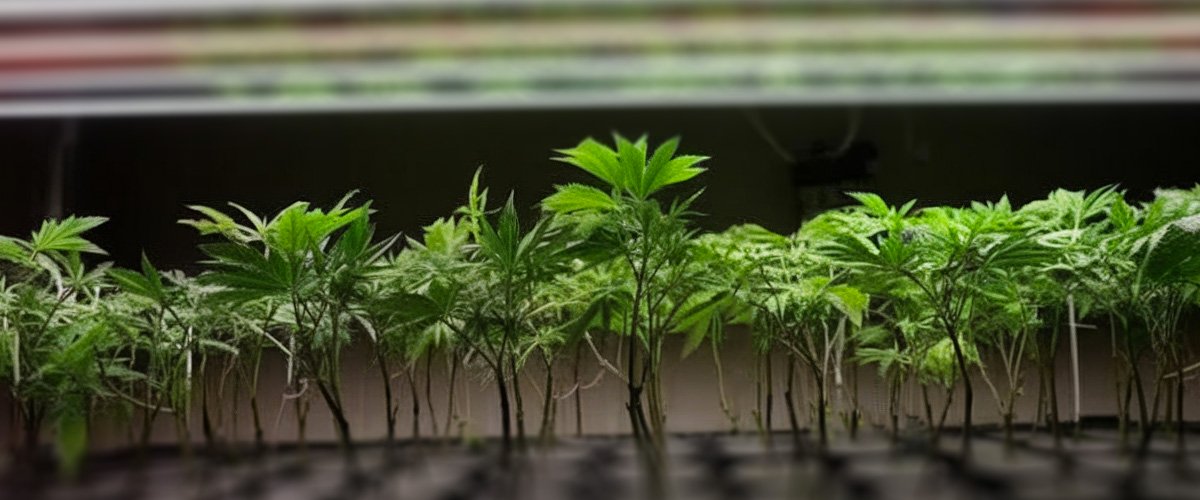What Are Autoflowering Cannabis Plants?
Cloning is an incredibly useful tool for cannabis growers. It allows you to skip the germination and seedling stages entirely, saving time and ensuring consistent results. By taking a cutting from a mature plant, you can replicate its genetics and traits exactly—a perfect solution for preserving high-performing strains. However, when it comes to autoflowers, cloning introduces unique challenges due to their shorter lifecycle and autoflowering characteristics. So, lets take a closer look at if cloning autoflowers is worth the effort and if its even possible.
Characteristics of autoflowering strains
Autoflowering strains are compact, making them great for small spaces. They have a short lifecycle, often ready for harvest in 8-10 weeks. They’re also hardy, with a natural ability to grow in colder climates with short summers, which makes them ideal for growing almost anywhere.
Differences between autoflowers and photoperiod strains
The key difference is that autoflowers don’t depend on light schedules to flower. While photoperiod strains need 12 hours of darkness to trigger flowering, autoflowers do their thing regardless of light and flower solely based on their age (usually at around 3-4 weeks). This also means autoflowers tend to have shorter lifecycles but might produce smaller yields compared to photoperiod plants.
Advantages and disadvantages of autoflowering plants
Advantages:
- Easy to grow for beginners
- Quick harvest time
- Can be grown almost anywhere
Disadvantages:
- Smaller yields compared to photoperiod strains
- Limited opportunities to train plants
- Generally lower THC levels in some strains
What Does Cloning Mean in Cannabis Cultivation?
Cloning in cannabis cultivation refers to taking a cutting from a mature plant and encouraging it to grow roots, essentially creating a genetic replica of the original plant. It’s a popular method for preserving specific traits, like potency or yield, across multiple plants.
Definition and purpose of cloning cannabis
Cloning is a way to replicate your favorite cannabis plant exactly as it is. The purpose is to maintain consistent quality, preserve desirable genetics, and save time compared to starting from seed. For growers, it’s like hitting copy-paste on a great plant.
Common methods used for cloning
The most common method involves:
- Taking a healthy cutting from a mother plant
- Dipping the cutting in rooting hormone
- Placing it in a growing medium, like soil or rockwool, and keeping it in a humid environment until roots develop.
Benefits of cloning cannabis plants
Cloning lets you replicate the exact traits of your favorite plants, saving you the unpredictability of growing from seed. You get faster growth compared to starting from scratch, and it’s often more cost-effective since you don’t need to buy new seeds each time.
Can You Clone an Autoflowering Plant?
Cloning autoflowers is tricky and often debated among growers. While it’s technically possible, the results will almost certainly be disappointing because the vegetative stage is only 3-4 weeks.
Challenges in cloning autoflowers
The biggest challenge is timing. Autoflowers have a set lifecycle, so any clones will be the same age as the parent plant. This means if you take a cutting from a plant a couple of weeks into the veg stage, then your clone could start flowering within a week or two, before it’s even had time to establish proper roots. The result will be a tiny little cannabis plant that probably won’t grow much taller than 6 inches.
Differences between cloning photoperiod and autoflower plants
With photoperiod plants, you control the light cycle and therefore the time at which your plants begin the flowering stage, so you can extend the vegetative stage as long as you want allowing your clones plenty of time to grow before flowering. Autoflowers don’t offer this flexibility. Once their internal clock starts ticking, there’s no stopping it, which makes cloning them much less effective.
Success rates and limitations of cloning autoflowers
Success rates for cloning autoflowers are generally low. Even if you manage to root a cutting, it’s unlikely to grow as vigorously or produce the same yields as the parent. For most growers, it’s not worth the effort compared to other methods.
Step-by-Step Guide to Attempt Cloning Autoflowers
If you’re determined to try cloning autoflowers, here’s how you can give it a shot. Just keep in mind that results may vary, and success isn’t guaranteed.
Preparing the parent plant and tools for cloning
Choose a healthy, mature autoflowering plant as the parent. Use clean, sterilized tools to take cuttings, and have rooting hormone and a suitable growing medium ready. Keep everything hygienic to avoid infections.
Taking and planting the cuttings
Cut a branch with at least one node using a sharp blade. Dip the cutting in rooting hormone, then plant it in your chosen medium. Ensure the environment is warm and humid, as this encourages root development.
Tips for rooting autoflower clones successfully
- Keep the cuttings in a humidity dome
- Provide indirect light (not too intense)
- Maintain a consistent temperature around 75°F (24°C)
Alternatives to Cloning Autoflowering Plants
If cloning autoflowers doesn’t sound worth the hassle, there are other ways to achieve similar results without the frustration.
Growing from feminized seeds
Feminized seeds offer a reliable way to grow plants with predictable traits. They eliminate the need for cloning, as every seed produces a female plant ready to flower.
Using advanced techniques like tissue culture
Tissue culture is a high-tech alternative to traditional cloning. While it requires specialized equipment and knowledge, it’s a promising way to propagate autoflowers and other challenging plants.
Maximizing yields without cloning
Focus on optimizing your growing environment. Use high-quality soil, provide the right nutrients, and manage light exposure. These steps can significantly improve yields without the need for cloning.
Autoflower Genetics and Cloning Challenges
The genetics of autoflowers make cloning inherently difficult, but understanding these challenges can help you make informed decisions as a grower.
Understanding the genetic limitations of autoflowers
Autoflowers are bred to flower automatically based on time, not light. This genetic trait limits their ability to restart growth cycles, which is essential for successful cloning.
How the short life cycle impacts cloning potential
The short lifecycle of autoflowers doesn’t leave much room for error. Clones often struggle to develop roots before they’re forced into flowering, resulting in stunted growth and minimal yields.
Strategies to work around autoflower cloning issues
Instead of cloning, focus on maximizing your parent plant’s growth and yield. Training techniques like low-stress training (LST) and providing optimal growing conditions can make a big difference.
FAQ:
Can autoflowers be cloned successfully?
Yes, but it’s challenging and often not worth the effort. Autoflowers have a set lifecycle, so clones rarely have time to root and grow properly before flowering.
What is the main difficulty in cloning autoflowers?
The main difficulty is their fixed lifecycle. Clones are the same age as the parent, so they start flowering prematurely, leading to poor growth and low yields.
How does cloning affect autoflower yields?
Cloning typically reduces yields because the clone doesn’t have time to establish roots or grow fully before flowering begins.
Are there better alternatives to cloning autoflowers?
Yes, growing at home from using seeds or optimizing your growing environment are more effective alternatives to cloning autoflowers.
What tools are needed to clone cannabis plants?
You’ll need a sharp blade, rooting hormone, a suitable growing medium, and a humidity dome to create the ideal environment for rooting cuttings.



